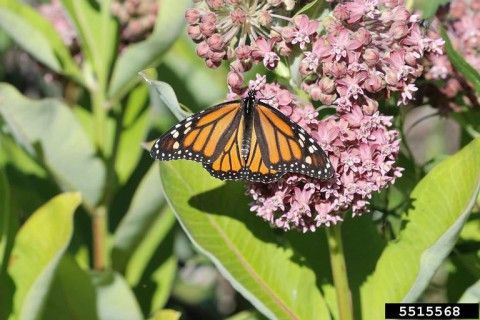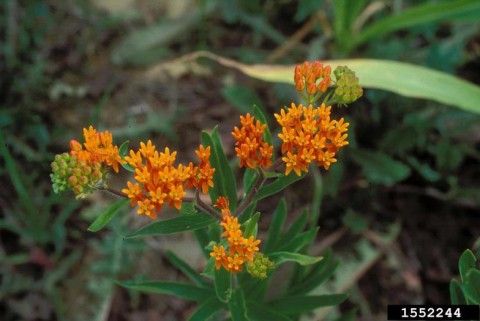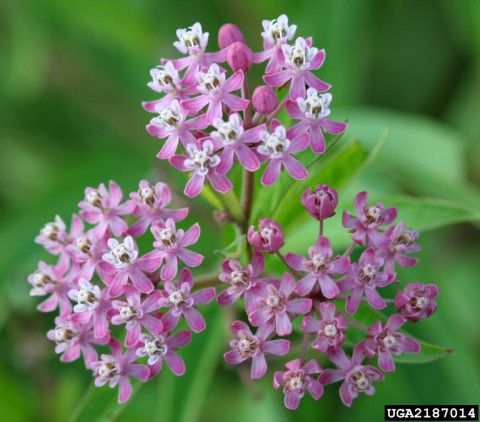There are over 140 known species of milkweed, eleven of which are native to the state of Pennsylvania. The three most common species in our region are common milkweed (Asclepias syriaca), butterflyweed (Asclepias tuberosa), and swamp milkweed (Asclepias incarnata).

Common Milkweed (Asclepias syriaca)
Common milkweed is the most well-known species of milkweed native to North America. It thrives in full sun to partial shade and in average to well-drained soils, and is commonly found in pastures, field edges and along roadsides. Its height can range anywhere from four to six feet and plants should be spaced two to three feet apart. Common milkweed has a short bloom period, from early- to mid-summer, when it contains large clusters of fragrant pink flowers.

Butterflyweed (Asclepias tuberosa)
Butterflyweed favors full sun in dry to medium soil. It is a hardy, drought-tolerant species. Butterflyweed reaches one to three feet in height and should be spaced one to three feet apart. The bloom period can range from late summer to fall. The vibrant orange to slightly yellow flowers are an easy way to identify this milkweed. Unlike the majority of milkweeds, the sap of this variety is not milky.

Swamp Milkweed (Asclepias incarnata)
As the name suggests, swamp milkweed does best in wet soil with full sun or partial shade. It can reach a height of four to six feet and should be spaced two to three feet apart. Swamp milkweed has a long summer bloom period and flowers can range from mauve pink to purple. This species of milkweed is a great choice for wetland rehabilitation.
Benefits to Wildlife
Monarch butterflies lay their eggs and feed (as larvae) exclusively on milkweed plants. Milkweed also plays an important role as a nectar source for other species of butterflies, as well as a wide variety of bumblebees, honeybees, wasps, flies, beetles, and even hummingbirds.
Toxicity
Milkweeds contain cardiac glycosides, making them toxic to most species of birds and mammals. Some species are more toxic than others, posing a larger risk if ingested. The monarch butterfly, as well as other insect species, has adapted to the toxin and utilizes it as a defense; the ingested chemicals make the insects undesirable in taste and possibly even poisonous to predators. Typically, livestock avoid milkweed, but when options for forage are limited, it may sometimes be ingested. Sheep are the most susceptible to milkweed poisoning.
Sources
National Plant Data Center, NRCS, USDA
Pennsylvania Dept. of Conservation and Natural Resources
Lady Bird Johnson Wild Flower Center, Univ. of Texas at Austin